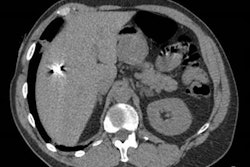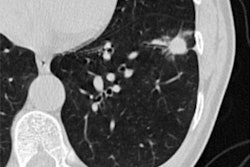Thursday, December 1 | 12:15 p.m.-12:45 p.m. | R5A-SPCH-5 | Learning Center -- CH DPS
In this Thursday afternoon poster session, University of Pennsylvania researchers will describe how visual CT severity scores beat dual-energy CT (DECT) iodine maps for predicting overall survival in patients with COVID-19 and acute pulmonary embolism.Iodine distribution abnormalities on DECT have been reported as a feature of COVID-19 pneumonia, but there's variability among interpreting radiologists regarding these findings, presenter Dr. Abass Noor and colleagues explained. The group sought to evaluate the benefit of utilizing iodine maps from DECT in patients with COVID-19 and acute pulmonary embolism compared to a visual lung damage CT score.
The research included 100 patients who underwent DECT using a protocol that produced iodine distribution maps between December 2020 and March 2021. Two thoracic radiologists assessed any iodine map abnormalities and calculated a visual lung damage CT score.
What did the investigators find? Between the two readers, there was moderate agreement for visual lung damage CT score (k = 0.70, with 1 as reference) and little agreement for evaluating pulmonary iodine density (k = 0.06).
"Our study has redemonstrated correlation between survival and visual CT severity score but did not show correlation with pulmonary iodine density on DECT," the team concluded. "This study has shown disagreement among interpreters regarding iodine distribution map findings and [these findings] may not offer more clinical value than observing the severity of pneumonia."





















